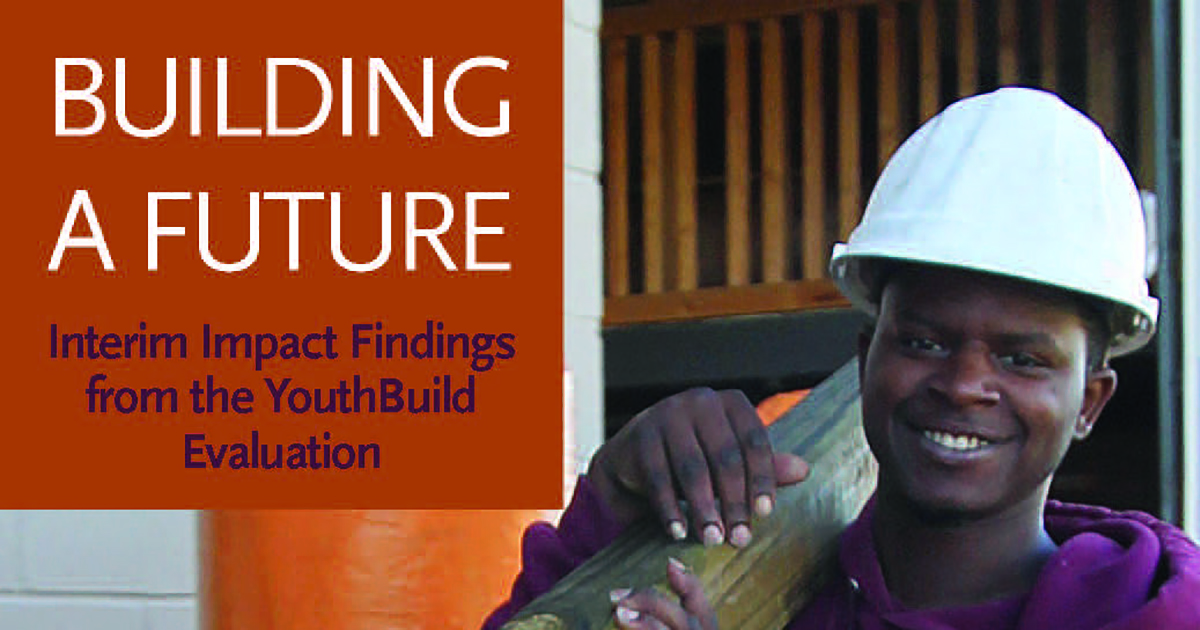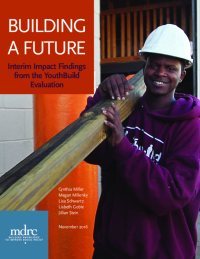Building a Future
Interim Impact Findings from the YouthBuild Evaluation

Young people have been hit especially hard by changes in the labor market over the past decades. Unemployment among 16- to 24-year-olds increased the most of any age group during the recent recession, and remains more than double that among older adults. The unemployment rate is especially high for young people without high school diplomas. YouthBuild is one program that attempts to help this group, serving over 10,000 of them each year at over 250 organizations nationwide. Each organization provides construction-related or other vocational training, educational services, counseling, and leadership-development opportunities to low-income young people ages 16 to 24 who did not complete high school.
YouthBuild is being evaluated using a randomized controlled trial, in which eligible young people at participating programs were assigned either to a program group, invited to enroll in YouthBuild, or to a control group, referred to other services in the community. The evaluation includes 75 programs across the country funded by the U.S. Department of Labor or the Corporation for National and Community Service and nearly 4,000 young people who enrolled in the study between 2011 and 2013. This report, the second in the evaluation, presents the program’s effects on young people through two and a half years.
Main Findings
About 75 percent of the young people assigned to the program group participated in YouthBuild, and about half of these participants reported that they graduated from the program within 12 months. YouthBuild led to a number of positive effects on young people, most consistently in the area of education and training.
-
YouthBuild increased participation in education and training, even though a high percentage of the young people in the control group also sought out and participated in education and training.
-
Overall, participants rated their experiences in YouthBuild favorably, although some program components were rated more highly than others.
-
YouthBuild increased the rate at which participants earned high school equivalency credentials, enrolled in college, and participated in vocational training.
-
YouthBuild led to a small increase in wages and earnings at 30 months.
-
YouthBuild increased civic engagement, particularly volunteering, but had few effects on other measures of youth development or attitudes.
-
YouthBuild had few effects on involvement in the criminal justice system.
The program’s interim effects on education and training are encouraging. A later report, measuring effects through four years, will examine whether these interim effects lead to longer-term gains in work and earnings.






